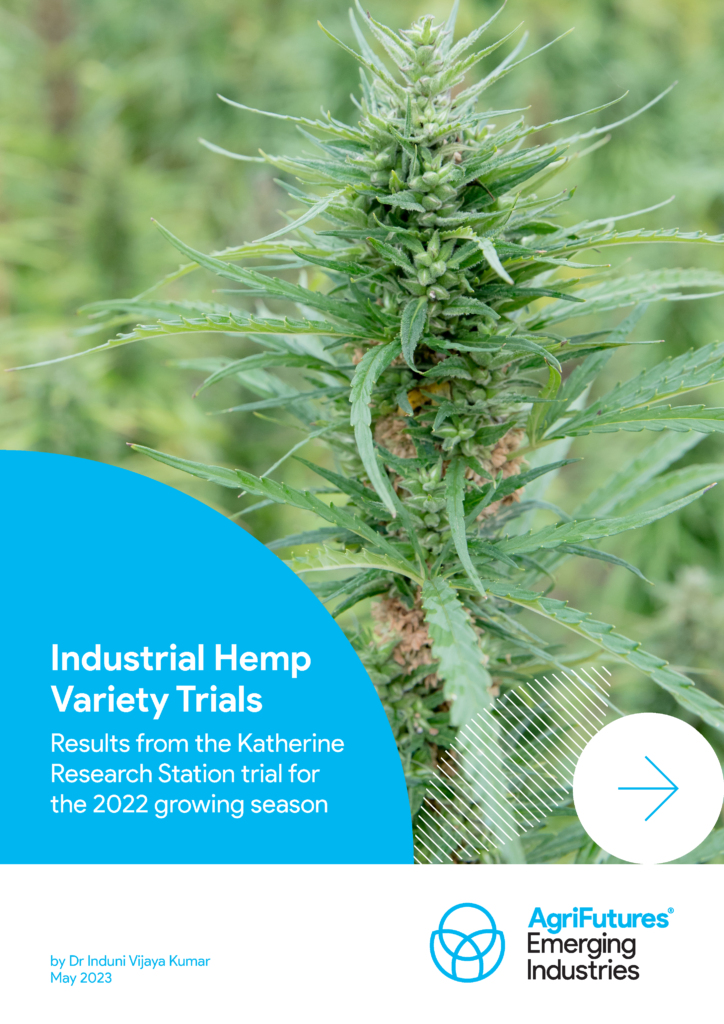AgriFutures Australia’s Emerging Industries Program has determined that industrial hemp (Cannabis sativa L.), i.e. low tetrahydrocannabinol hemp, is an industry with high growth potential. Industrial hemp is a quick-growing and high-yielding biomass crop that has a diverse range of uses, including textiles, stockfeed, pet bedding, human food (seed) and building materials. However, to meet demand, there needs to be an increase in the scale of production – yet little is known about the appropriate varieties or timing of sowing across a broad range of farming systems in Australia.
Identified as a top priority in the Australian Industrial Hemp Strategic RD&E Plan (2022-2027) was the establishment of nationally coordinated industrial hemp variety trials that cover the current and future major production environments.
The Industrial Hemp Variety Trials (IHVT) program aims to provide Australian hemp growers with independent information about the performance of industrial hemp seed varieties suited to specific geographic locations within Australia. The IHVT is a three-year project, with year one including sites in the Northern Territory (1), South Australia (2), Tasmania (1), Victoria (1), and Western Australia (2).
Year one results from Katherine, Northern Territory indicate the trialled later-maturing varieties Han Cold, Yuma and King Gee performed best for biomass and grain production under the northern environmental conditions, suggesting these are well-suited to this region. However, Han NE and Ruby had the highest seed oil content and protein content.
An important point to note is the unusual climatic conditions experienced during the 2022 growing season, compared with the long-term average rainfall pattern. The trial will occur for another two years to confirm the year one results and to provide more robust data to assess the performance of the varieties in this northern region.





